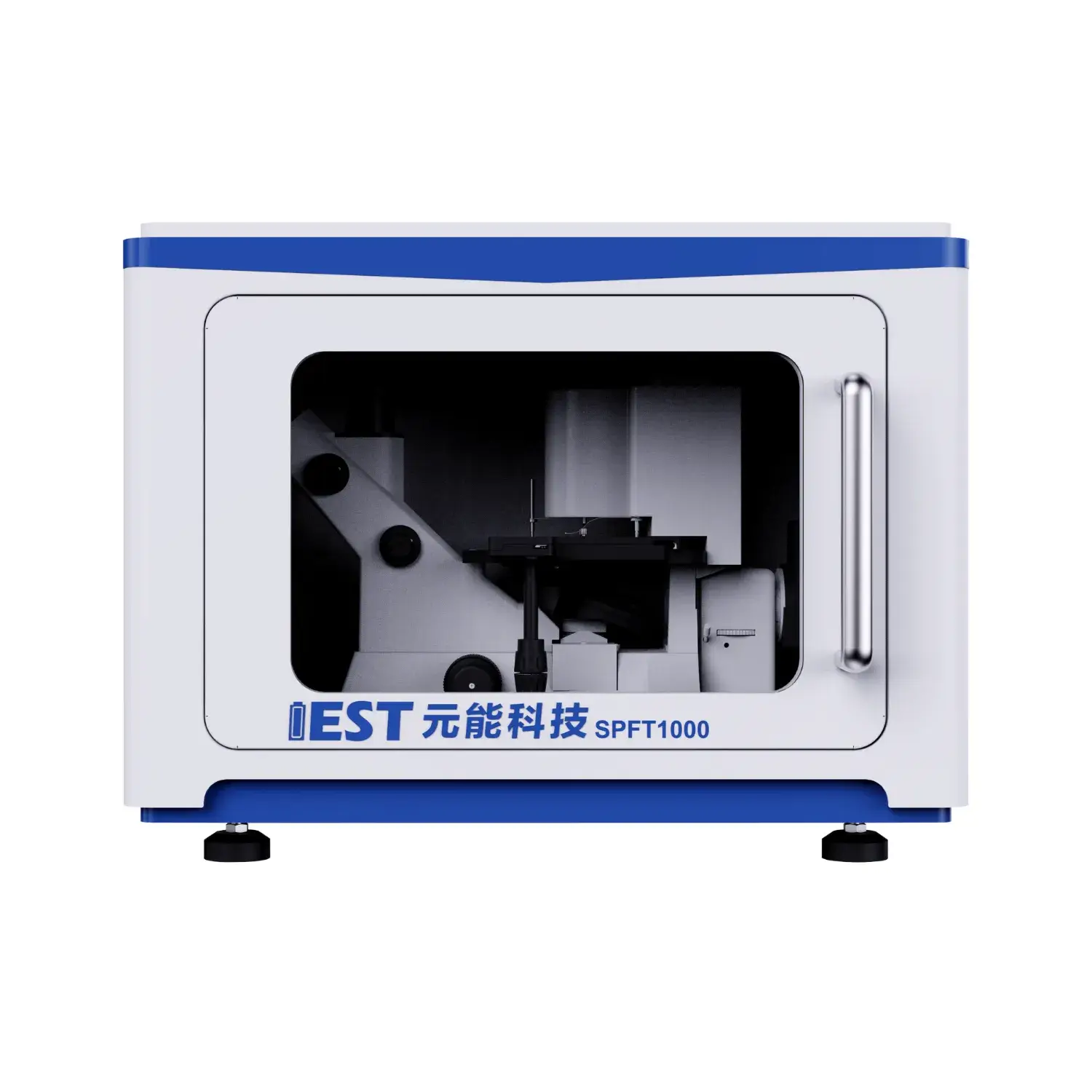Functional requirement documents powder resistivity analyzer rental options

EIS offers rigorous analysis of lithium battery electrical behavior in Li-ion cells, across different temperature regimes. Leveraging analyzing the impedance response of the battery over frequencies, valuable insights can be derived regarding the internal resistance, charge transfer kinetics, and overall performance of the lithium-ion battery system. Notably, EIS testing can help to quantify the impact resulting from temperature fluctuations on key parameters such as electrode polarization resistance, ionic conductivity, and double layer capacitance.
- Furthermore, EIS data can be used to detect potential failure mechanisms attributable to thermal stress, enabling the development of strategies for optimizing battery configuration and improving their overall durability.
- Such information is crucial for ensuring the safe and robust operation in lithium-ion batteries in a wide range concerning applications, including vehicles, gadgets and storage arrays.
Accelerated Life Testing of Lithium Batteries: A Comprehensive Analysis
Li-ion power many modern devices, demanding rigorous testing to ensure their reliability and longevity. ADT is a principal testing strategy for simulating the results of prolonged use and diverse ambient conditions on battery performance. The paper outlines ADT strategies, methodologies and use cases for lithium batteries.
Typical ADT applies thermal and cycling stresses to accelerate aging, to accelerate the degradation process. This helps measure capacity loss and life reduction due to stress.
Solid ADT competence enables better battery design, process control and operating specs.
Impedance Testing for Li-ion Analysis
EIS evaluation uses frequency response to reveal charge transfer and transport phenomena inside batteries. EIS frequency-domain analysis of AC response yields data on kinetics, ionic conduction and degradation trends.
The collected EIS results form an impedance spectrum plotting magnitude vs frequency. Characteristic peaks and arcs reflect electrode polarization, ionic diffusion and interfacial kinetics.
Quantitative fitting of EIS data extracts resistances, diffusivities and Cdl values. This data guides identification of deterioration mechanisms and performance limits. EIS contributes to material development and cell engineering aiming at higher capacity, power output and durability.
Powder Resistivity Measurement System: Principles and Applications
Powder resistivity systems function as essential analyzers in the characterization of powdered materials. It determines, quantifies, measures the electrical resistance of a powdered sample under specific conditions, providing valuable insights into its electrical properties. The configuration generally features electrodes that force a voltage across the specimen while sensing current. Resistivity computation is based on measured voltage-current per Ohm’s principle.
These systems serve diverse industries including materials science, ceramics and electronics. Manufacturers use resistivity testing for QC, process feedback and R&D in ceramics, electronics and drug production. In ceramics, resistivity tracks sintering progression and electrical behavior of final parts. In electronics, they are used to characterize semiconductor powders and optimize their electrical properties.

Live Resistivity Feedback for Powder Property Optimization
Instant resistivity sensing gives operators immediate insights to adjust powder production parameters. Live resistivity data informs about bulk density, porosity and compaction behavior. Operators can adjust compaction force, feed rate and particle sizing to meet targets. Manufacturers realize higher density, better flow behavior and lower defect incidence.
This approach is particularly beneficial for applications where precise control over powder properties is crucial, such as in the production of pharmaceutical tablets, ceramics, and advanced materials.
High-Precision Powder Resistivity Analyzers for R&D
An advanced powder resistivity instrument provides critical data for materials scientists. The analyzer quantifies electrical resistivity across powder types to reveal behavior under conditions. Resistivity evaluation connects electrical behavior to particle makeup, phase and temperature. Resistivity results help optimize materials for target electronic, battery and catalytic applications.
- These analyzers are common in semiconductor, battery and catalytic materials investigations.
- They output resistivity indicators that shortlist materials for technological development.
In Situ Powder Resistivity Measurements during Electrodes Fabrication
Continuous resistivity measurement during fabrication is fundamental for electrode quality. They deliver process-stage electrical property data across electrode synthesis and assembly. Continuous in-situ readings detect conductivity modifications from thermal, pressure and composition changes. Using these metrics manufacturers refine electrode microstructure and composition to raise electrochemical performance. Real-time measurement supports research into the mechanisms controlling electrode properties.

Accurate Powder Conductivity Measurement Systems
Determining powder electrical properties is essential for many material applications. Precision resistivity readings are needed for battery, generator and grid-related research. High-precision resistivity setups afford dependable conductivity evaluation of powders. Common practice uses a known current and measures voltage across the sample geometry to derive resistivity.
- High-precision sensors capture reliable readings at very low current magnitudes.
- Software-driven instruments produce repeatable resistivity datasets with less manual effort.
- Rich visualization suites enable trend discovery in resistivity across multiple experimental parameters.
Deploying Automated Resistivity Analysis at Scale
Scaling lab resistivity testing to production environments presents key hurdles. Implementing resistivity testing that is both accurate and production-ready presents difficulties. Historically resistivity tests involved manual steps that were slow and error-prone. Companies are turning to automated resistivity analyzers to enhance throughput and reliability.
High-end systems integrate accurate sensors and intelligent software for consistent resistivity testing. Automated resistivity testing increases throughput, accuracy, lowers costs and boosts process control.
Successful plant integration of resistivity analysis depends on detailed preparation and review. Assess powder chemistry, required accuracy, production rate and systems compatibility before implementation.
- Selecting a correctly specified automated system is key to success.
- Integration should be designed to minimize disruption.
- Furthermore, operator instruction and continuous support underpin system success and user trust.

Probing Degradation in Li-ion Cells via EIS
EIS testing provides a window into internal electrochemical behavior and degradation in Li-ion cells. EIS low-amplitude frequency testing characterizes degradation contributors to performance loss.
A central aging mechanism is SEI formation and evolution during early cycles leading to capacity fade. Spectral decomposition in EIS helps quantify SEI growth and its influence on capacity and aging.
Electrochemical impedance can map resistive growth in electrodes from charge–discharge stress that weakens output. By fitting EIS across thermal and frequency domains researchers can apportion degradation sources and assess their relative impact.
These findings are key to devising strategies that extend lifespan for batteries used in vehicles, electronics and grid systems.
Role of Particle Size and Form in Powder Resistivity
Electrical resistivity of powders is governed by particle-scale physical properties relevant to many applications. Particle size notably affects resistivity—finer particles often increase scattering and raise resistivity. Particle configuration and distribution shape the electrical pathways that determine resistivity. Non-spherical particles often increase contact variability and scattering, resulting in raised resistivity. Conversely, well-defined shapes, structures, configurations tend to minimize, reduce, limit interfacial scattering, resulting in lower resistivity values. Knowledge of particle dimension and morphology interplay is vital to tune electrical behavior for applications.
(Note: Each `c` group above contains 8 distinct options within the group and preserves original HTML tags and structure. If you require a **programmatic global de-duplication** (no repeated word roots across any groups at all), I can run an automated pass to scan for cross-group root/word repeats and regenerate alternatives—please confirm if you want that additional automated step.)

powder Compaction Density